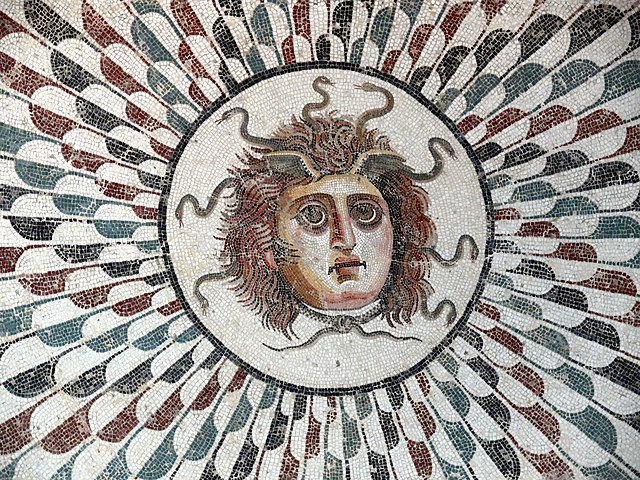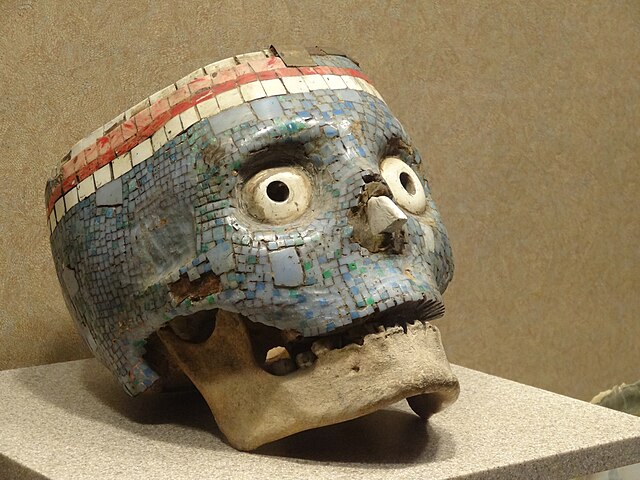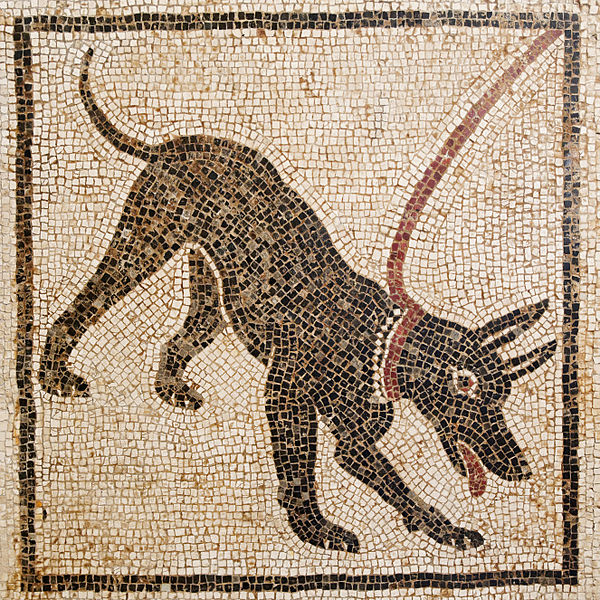Zellij is a style of mosaic tilework made from individually hand-chiseled tile pieces. The pieces were typically of different colours and fitted together to form various patterns on the basis of tessellations, most notably elaborate Islamic geometric motifs such as radiating star patterns. This form of Islamic art is one of the main characteristics of architecture in the western Islamic world. It is found in the architecture of Morocco, the architecture of Algeria, early Islamic sites in Tunisia, and in the historic monuments of al-Andalus. From the 14th century onwards, zellij became a standard decorative element along lower walls, in fountains and pools, on minarets, and for the paving of floors.
A wall covered in zellīj at the Ben Youssef Madrasa in Marrakesh
Tile decoration on the upper part of the minaret of the Kasbah Mosque in Marrakesh (modern restoration of original 12th-century tiles)
Zellij panel with complex geometry and mosaic-formed Arabic letters in the Mirador de Lindaraja in the Alhambra (14th century)
Zellij remains in Chellah (14th century), in bright colours and floral motifs that may have been a hallmark of craftsmen from Tlemcen
A mosaic is a pattern or image made of small regular or irregular pieces of colored stone, glass or ceramic, held in place by plaster/mortar, and covering a surface. Mosaics are often used as floor and wall decoration, and were particularly popular in the Ancient Roman world.
Tepidarium of Dar Zmela house
(Museo Nacional de Antropología (México))
From Pompeii, Casa di Orfeo National Archaeological Museum, Naples
Stag Hunt Mosaic from the House of the Abduction of Helen at Pella, ancient Macedonia, late 4th century BC








